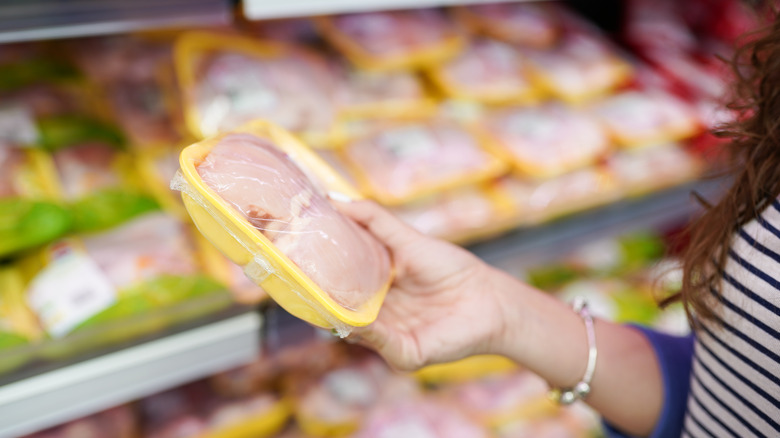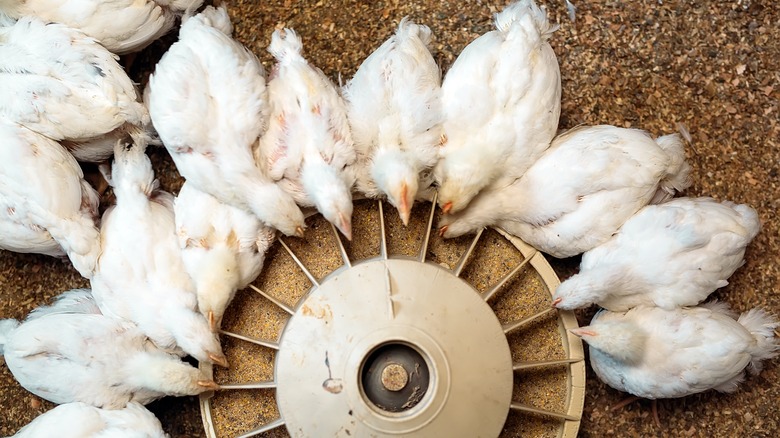Chicken May No Longer Be The Cheapest Meat At The Store
Shoppers may soon be facing another price hike at the grocery store, this time for chicken. Between rising inflation, an ongoing bird flu outbreak, and the war in Ukraine, experts are predicting the historically cheap grocery staple may soon become much less affordable (via The Guardian and USDA).
As Silver Lake Farms notes, the relative ease of farming the animal, its nutritional value, and its versatility make chicken an ideal meal — especially for families on a budget. According to the U.S. Bureau of Labor Statistics, beef products on average in cities ranged in price from between $4.76 to $10.66 per pound in March of this year, while chicken cost between $1.72 per pound for a whole bird and $3.87 per pound for boneless, skinless breast.
Per the USDA report predicting increases in the cost of food for 2022, an outbreak of bird flu (which isn't transmissible to humans through food, but is highly contagious amongst birds) led experts to predict poultry price increases between 7.5% to 8.5%. The CDC reports 29 states have now been impacted by the outbreak, leading to the slaughter or death of over 35 million birds.
Not exactly chicken feed
As stated above, bird flu is not the only thing driving up chicken prices. Along with industry-wide issues plaguing food producers, including labor shortages and fuel costs, the war in Ukraine has created a unique problem for Europe's meat producers since the cost of feed has been directly impacted by the conflict. The Guardian notes that common chicken feed ingredients include sunflower oil and wheat, both of which are Russian and Ukrainian exports.
The Guardian shares that the price of chicken had already risen by an average of 12% in the last year in the U.K., causing popular restaurant chains to increase prices. As the cost of chicken is expected to rise, experts suggest the prices could potentially increase to the same amount as some cheaper cuts of beef. Compounding this problem, Market Watch notes that prices of beef and pork have also risen overall. For many, this means a shift from more traditionally expensive protein options in favor of more affordable choices, including chicken, thus driving poultry demand and prices even higher.

